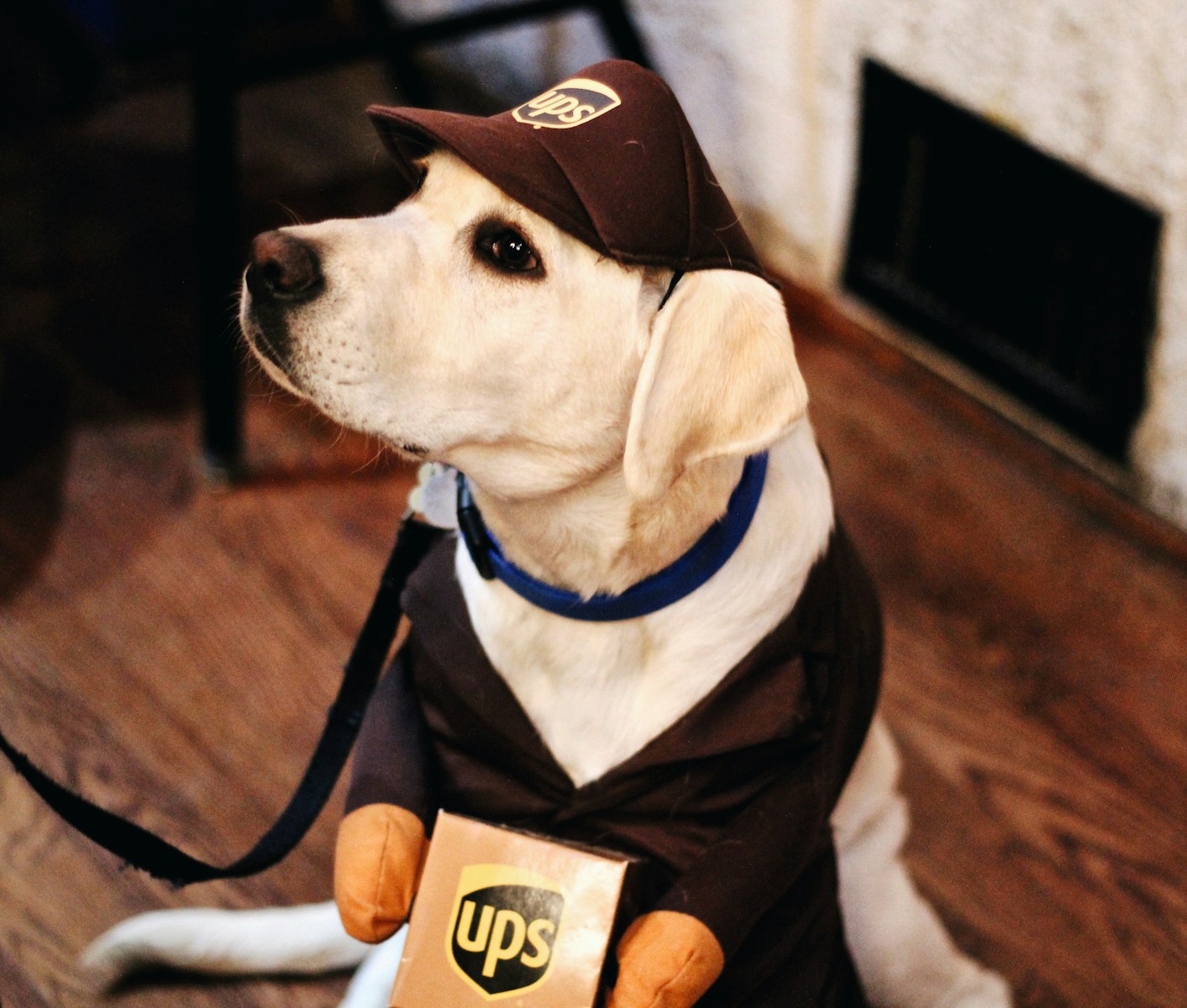Amazon customers should prepare for longer delivery times in the future, as UPS, a major carrier for Amazon packages, has announced a reduction of its deliveries for Amazon by 50%. This news comes about 5 1/2 years after FedEx made a similar decision when it announced it would not renew its contract with Amazon for express shipping in the United States. FedEx also ended its ground delivery contract with Amazon later that year. This significant reduction in delivery capacity is likely to result in extended shipping times for many Amazon orders.
The reduction in UPS deliveries presents challenges for Amazon’s logistics network. Amazon may need to rely more heavily on its own delivery services and other carriers to compensate. Customers who have grown accustomed to quick Prime shipping may need to adjust their expectations in the coming weeks.
Amazon has not yet announced official changes to its delivery estimates. Shoppers should check their order status regularly and allow extra time for packages to arrive. Patience will be key as Amazon works to adapt its shipping processes to this new reality.

The Shifting Landscape of Package Delivery
Impact on Consumers
UPS’s decision to significantly reduce its Amazon deliveries will likely have ripple effects on consumers. The most obvious impact is the potential for longer shipping times for Amazon packages. While Amazon has its own delivery network, it still relies heavily on carriers like UPS. A 50% reduction in UPS’s Amazon volume could strain Amazon’s capacity, leading to delays, especially during peak seasons like the holidays. Consumers might also see changes in delivery costs, although this is less certain. It’s possible that increased competition among carriers or Amazon’s own adjustments could mitigate price increases.
UPS’s Strategic Shift
UPS’s move is primarily driven by profitability. While Amazon is a massive customer, the margins on those deliveries are reportedly lower than in other sectors. UPS is aiming to focus on more lucrative areas like healthcare and small business shipments. This strategic shift reflects a broader trend in the logistics industry, where companies are prioritizing efficiency and profitability over sheer volume. UPS anticipates an 8.5% decrease in average daily U.S. volume in 2025 but projects a 6% increase in revenue per package. This indicates a calculated move to higher-value shipments.
Amazon’s Response
Amazon faces the challenge of filling the delivery gap left by UPS. They could expand their own delivery network further, partnering with smaller carriers, or exploring alternative delivery methods. The company has already invested heavily in its logistics infrastructure, including its own fleet of delivery vans and even drone delivery programs. The reduction in UPS volume could accelerate these efforts. It will be interesting to see how Amazon adapts to maintain its delivery speed and reliability.
The Competitive Landscape
This change could reshape the competitive landscape of the package delivery industry. Other carriers like FedEx and the United States Postal Service (USPS) might see an increase in volume as Amazon seeks alternative options. This could lead to more competition and potentially better deals for consumers. It also highlights the ongoing battle for dominance in the rapidly growing e-commerce delivery market.
Analyzing the Pros and Cons
| Stakeholder | Potential Pros | Potential Cons |
|---|---|---|
| Consumers | Potentially more competitive pricing in the long run | Likely longer shipping times, especially initially |
| UPS | Increased profitability, focus on higher-value shipments | Reduced overall volume, potential network adjustments |
| Amazon | Opportunity to expand its own delivery network, potential for innovation | Challenge of filling the delivery gap, potential for short-term disruptions |
| Other Carriers | Potential increase in volume and market share | Increased competition, need to adapt to changing market dynamics |
Future Outlook
The long-term impact of UPS’s decision remains to be seen. It will depend on how Amazon responds, how other carriers react, and how consumer behavior evolves. This situation underscores the dynamic nature of the delivery industry and the constant push for efficiency and profitability. It’s a development worth watching, as it could significantly alter the way we receive our online orders.
The Rise of Alternative Delivery Methods
The changing dynamics between UPS and Amazon highlight the importance of exploring alternative delivery methods. Drone delivery, for example, is gaining traction as a potential solution for faster and more efficient delivery, especially in suburban and rural areas. Companies like Amazon and Wing are already testing drone delivery programs, and while widespread adoption is still some time away, the technology is rapidly improving. Another alternative is the use of autonomous vehicles for package delivery. Several companies are developing self-driving delivery robots and trucks that could revolutionize last-mile logistics. These technologies, while still in their early stages, represent the future of package delivery and could eventually become mainstream. As e-commerce continues to grow, innovative delivery solutions will be crucial for meeting consumer demand and maintaining efficiency.
Key Takeaways
- UPS has cut Amazon deliveries by 50%, likely extending shipping times
- Amazon may increase reliance on its own delivery services and other carriers
- Customers should check order status regularly and expect potential delays
Impact of UPS Delivery Reduction on Amazon Shipping
UPS’s decision to cut Amazon deliveries by 50% will significantly affect shipping times and logistics for Amazon customers. This change will reshape the e-commerce giant’s delivery network and impact customer expectations.
Understanding the Amazon-UPS Relationship
Amazon and UPS have partnered for nearly 30 years. In 2024, Amazon accounted for about 12% of UPS’s total revenue. The shipping giant’s move to reduce Amazon volume aims to focus on more profitable deliveries.
UPS expects its average daily U.S. volume to drop 8.5% year-over-year in 2025. However, the company projects a 6% increase in revenue per package. This shift indicates a strategy to prioritize higher-value shipments over volume.
For Amazon, losing half of its UPS capacity presents a major challenge. The company must now find alternative ways to maintain its fast shipping promises, especially for Prime members.
Adjusting to New Shipping Timelines
Amazon customers may experience longer delivery times as the company adapts to reduced UPS capacity. Prime members accustomed to one-day or two-day shipping could see delays.
To mitigate impacts, Amazon might:
- Expand its own delivery fleet
- Partner with other carriers
- Adjust Prime shipping guarantees
Estimated delivery times on Amazon’s website may become less precise or longer. The company might need to revise its expedited shipping options and pricing.
Customers in areas heavily reliant on UPS could face the most significant changes. Amazon may prioritize its own delivery network in densely populated regions, potentially leading to rural delivery delays.
Strategies for Customers and Amazon Amidst Delivery Changes
Amazon and its customers face new challenges due to reduced UPS deliveries. Adapting to these changes requires proactive approaches and alternative solutions.
Navigating Customer Service Options
Amazon customers can explore multiple channels to address delivery concerns. The Amazon app and website offer quick access to order status updates and customer support. Users can track packages, view estimated delivery dates, and contact customer service directly through these platforms.
Phone support remains available for urgent issues. Amazon’s customer service team can provide real-time updates on delayed deliveries and offer solutions for time-sensitive orders.
Customers should check their account settings to ensure delivery preferences are up-to-date. This includes verifying shipping addresses and selecting alternative delivery options where available.
Overcoming Delivery Challenges
Amazon may expand its own delivery network to compensate for reduced UPS capacity. The company could increase its fleet of delivery vehicles and drivers to maintain service levels.
Customers can opt for Amazon Lockers or pickup points as alternatives to home delivery. These secure locations offer flexible collection times and reduce the risk of missed deliveries.
Amazon might partner with other carriers to fill the gap left by UPS. This could lead to a more diverse delivery network, potentially improving reliability and speed in some areas.
Shoppers should consider placing orders earlier than usual to account for possible delays. Planning ahead for important purchases can help mitigate the impact of longer delivery times.
Frequently Asked Questions
UPS’s recent decision to reduce Amazon deliveries by 50% has raised concerns among customers and industry observers. This change will impact delivery times, Prime membership benefits, and the broader e-commerce landscape.
What factors have led to UPS reducing its deliveries to Amazon by half?
UPS cut Amazon deliveries due to rising costs and capacity constraints. The company aims to focus on more profitable shipments from other clients. Amazon’s high volume but lower-margin packages became less attractive for UPS’s business model.
How will the UPS cut in Amazon deliveries affect delivery times for customers?
Customers may experience longer delivery times for Amazon orders. Without UPS handling half of its previous volume, Amazon faces challenges in maintaining its quick delivery promises. Delays could range from a few days to over a week in some cases.
What alternatives is Amazon considering to mitigate the impact of reduced UPS deliveries?
Amazon is expanding its own delivery fleet to compensate for the UPS reduction. The company is investing in more delivery vans and drivers. It’s also exploring partnerships with regional carriers and considering increased use of the U.S. Postal Service.
In what ways may Amazon Prime members be affected by the recent changes in UPS delivery volumes?
Prime members might see changes in their guaranteed delivery times. Two-day shipping could become less reliable in some areas. Amazon may adjust Prime benefits or pricing to reflect the new logistics reality.
How might UPS’s decision to slash deliveries to Amazon influence the broader e-commerce logistics industry?
This decision could lead to a reshuffling of logistics partnerships. Other carriers may step in to fill the gap left by UPS. It might also accelerate the trend of e-commerce companies building their own delivery networks.
What strategies could consumers use to cope with the potential delays in Amazon orders due to UPS’s actions?
Consumers can plan purchases further in advance to account for possible delays. Using Amazon lockers or in-store pickup options might help avoid shipping issues. Exploring alternative retailers for time-sensitive items could be a wise strategy.







